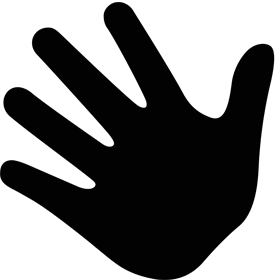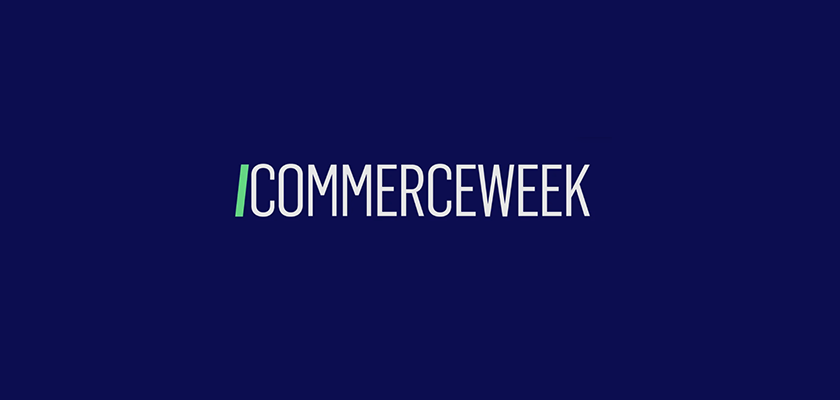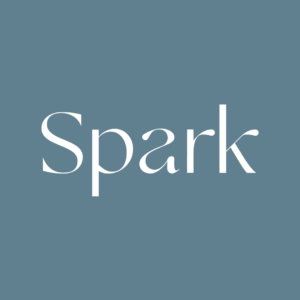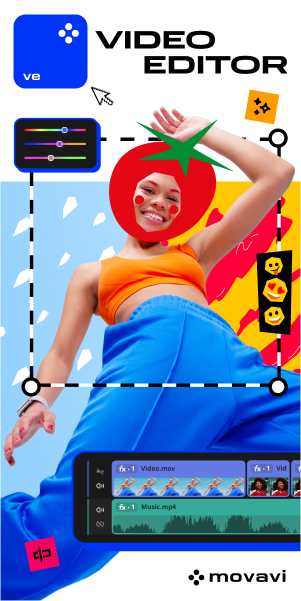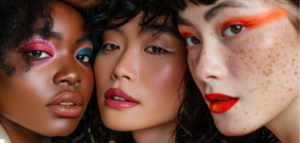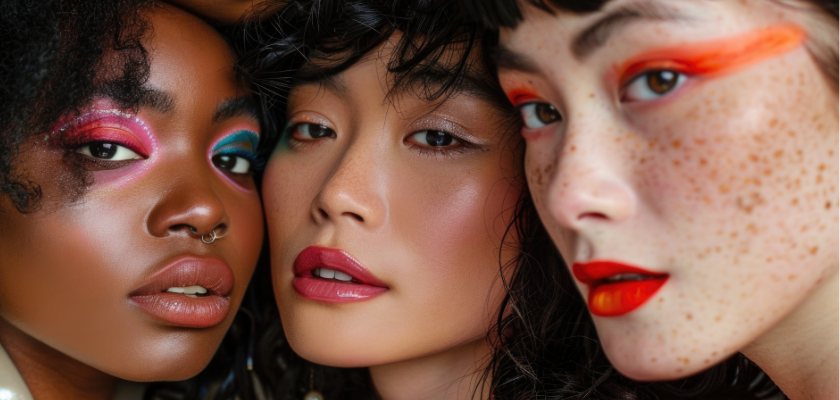
5 Beauty Marketing Trends You Must Know for a Glowing 2024
The beauty scene is set to sparkle in 2024, as an industry is projected to reach approximately $580 billion by 2027. With fresh beauty marketing trends stirring up excitement, we’re seeing transformative ways brands connect with us.
From leveraging AI to taking action against climate change, these beauty marketing trends signify a dynamic shift in beauty marketing.
Let’s analyze one by one how the latest beauty marketing trends shape the industry and what their outcomes are.
Beauty Marketing Trends: Stay Ahead of the Curve in 2024
Captivating consumers in 2024 demands staying ahead of the curve – like always.
Before starting listing, this year’s trends are all about fresh approaches – embracing tech (especially AI), prioritizing sustainability, and celebrating inclusivity. Now, you’re invited to explore the marketing strategies that will propel your brand to the forefront of the beauty conversation, from personalized experiences to engaging new realities.
Build Brand Authenticity (The Hottest Beauty Branding Trend!)
Well-built branding is still the most effective way to optimize your marketing efforts. In other words, consumers are still savvy and seek connections with brands that align with their values and feel genuine. So much so that, we know that 81% of customers require trust in a brand before purchasing from them.
What do we refer to when talking about an authentic beauty brand? When a brand is authentic, it builds trust and loyalty with its audience – as a result, consumers become more likely to repeat purchases and be part of positive word-of-mouth marketing.
To build brand authenticity in beauty marketing, being upfront about ingredients, manufacturing processes, and sustainability efforts is a must. In addition to that, offering behind-the-scenes access to customers (by sharing glimpses into the company culture, product development process, and team) is a good call. At that point, we need to remind you that vegan and cruelty-free cosmetic brands are “naturally” better at building authenticity.
Take a look at one of the cruelty-free brands, CORPUS how clear about their products’ ingredients:
Revolutionize Beauty Marketing with AI and AR Transformation
Beauty and artificial intelligence (AI) are changing the way we engage with beauty companies. They’re using advanced AI to make lifelike digital models and online personalities for promoting beauty products, which work well with social media platforms. Augmented reality (AR) adds to this by making shopping more personal and letting people try out makeup virtually.
L’Oréal and Google have been leaders in providing their customers with augmented reality (AR) options, improving how people shop for beauty items online.
L’Oréal, through its ModiFace technology, now provides AI-powered virtual try-on capabilities on Amazon, allowing customers to see how different lipstick shades look on them using their mobile phone’s front-facing camera. With this technology, L’Oréal offers photo-realistic results and an accurate and engaging try-on experience.
Similarly, Google has expanded its AR beauty tools, directly enabling virtual try-ons for hair color and foundation from mobile browsers. This step has made augmented reality (AR) features easier to use, allowing customers to virtually try on different beauty products before buying them.
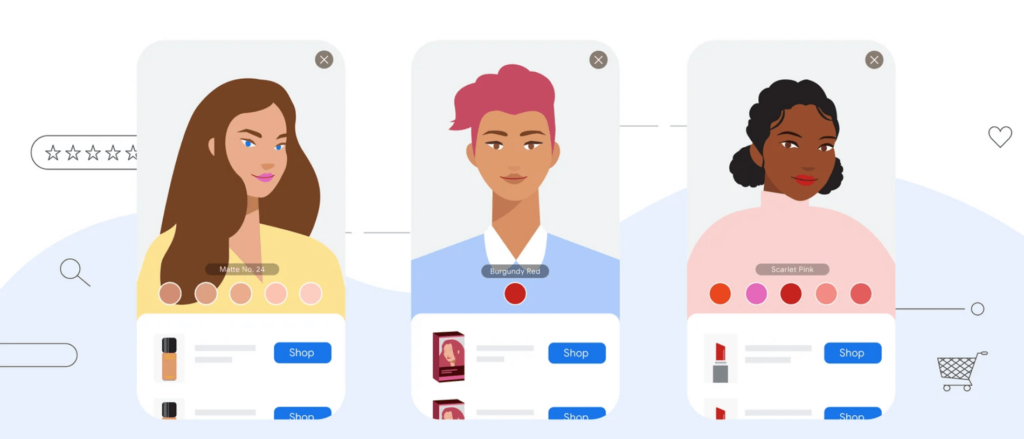
Google’s AR tools now cover a wide variety of beauty areas, like lipstick, eye makeup, foundation, and hair dye, and there are plans to expand these options to more products.
Take Action Against Climate Change
Sustainability is at the core of beauty brand marketing trends, with an emphasis on eco-friendly packaging, cruelty-free testing, and natural ingredients. Take Lush as an example of this commitment to sustainability, especially in how they handle packaging and raw materials. They strive for as little packaging as possible, with around half of their items being sold without any packaging. For the items that require packaging, 90% of the materials used are recycled.
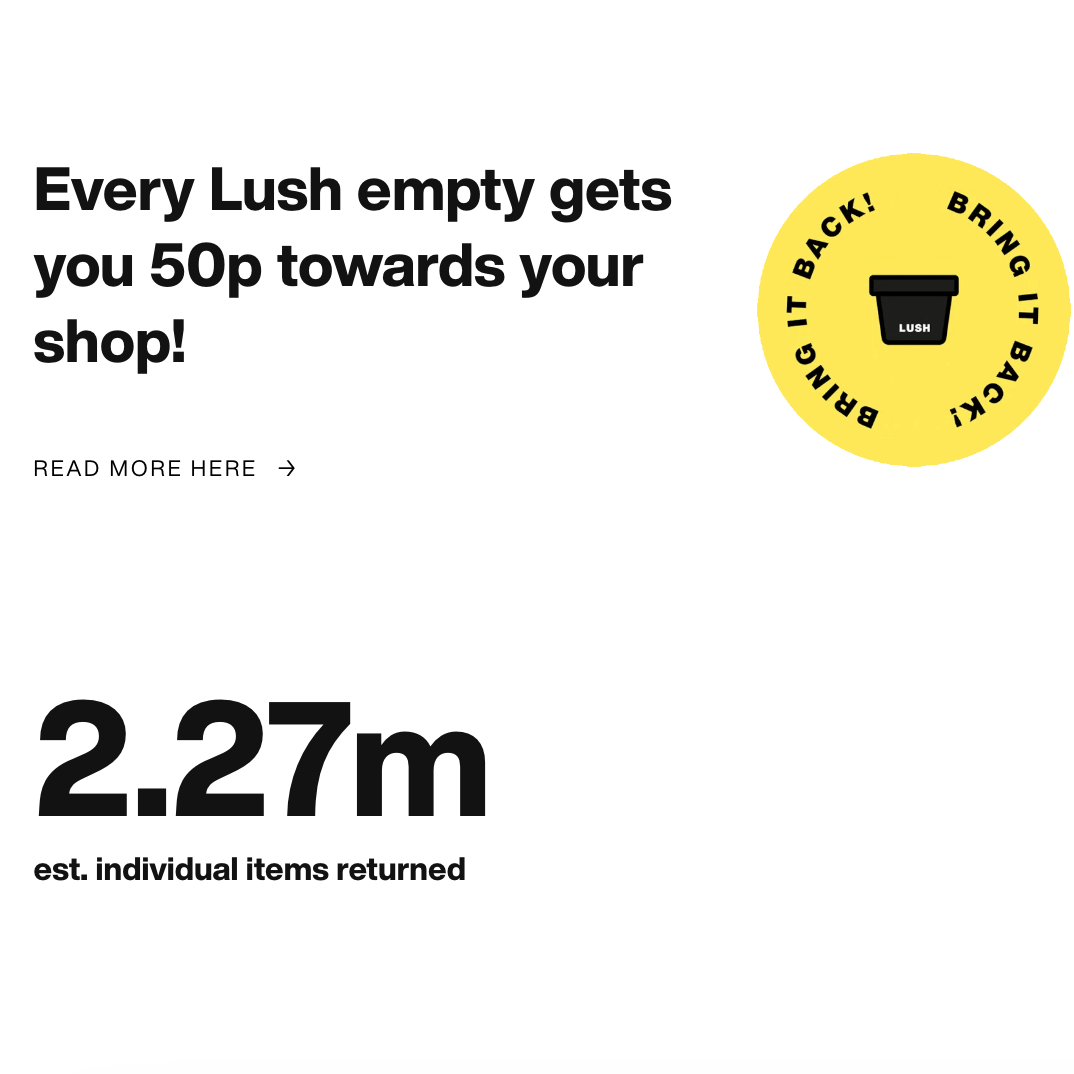
Lush is also committed to sourcing ingredients in a sustainable way, which greatly reduces their impact on the environment.
Provide Live Shopping – Personalized Experience
Looking for an engaging shopping experience that goes beyond traditional e-commerce? Of course, the answer is live shopping!
As widely known, live shopping experiences are a new and highly powerful way for beauty brands to connect with consumers and drive sales. These experiences are interactive live streams hosted by influencers & brand representatives showcasing beauty products. Viewers can see the products in action, ask questions in real-time, and even purchase directly within the stream (on Instagram and TikTok especially).
Source: https://shop.tiktok.com/business/en
What’s more? Live shopping offers a more dynamic experience compared to static product images. Viewers/prospects can see how products look & perform and gain valuable insights before purchase. The ability to ask questions and get instant responses from influencers or beauty experts allows for a more personalized shopping experience.
Take Advantage of Social Media (It’s Your Playground!)
As you already know, social media platforms have become the main platforms for beauty marketing and creating new trends. Brands and users together shape the future of the beauty industry and eventually the beauty marketing strategies.
Through innovative beauty campaigns that capture the zeitgeist and partnerships with influencers for genuine endorsements, social media has shown itself to be the main source for reaching audiences, inspiring them, and turning those who watch into loyal customers.
Take teeth-whitening content as an example – that subject is a good example demonstrating social media being an ever-rising beauty marketing trend. Teeth whitening content on Instagram and TikTok has been generating millions of views, and thousands of likes and comments. These platforms are key in shaping what people find popular and attractive in the beauty world.
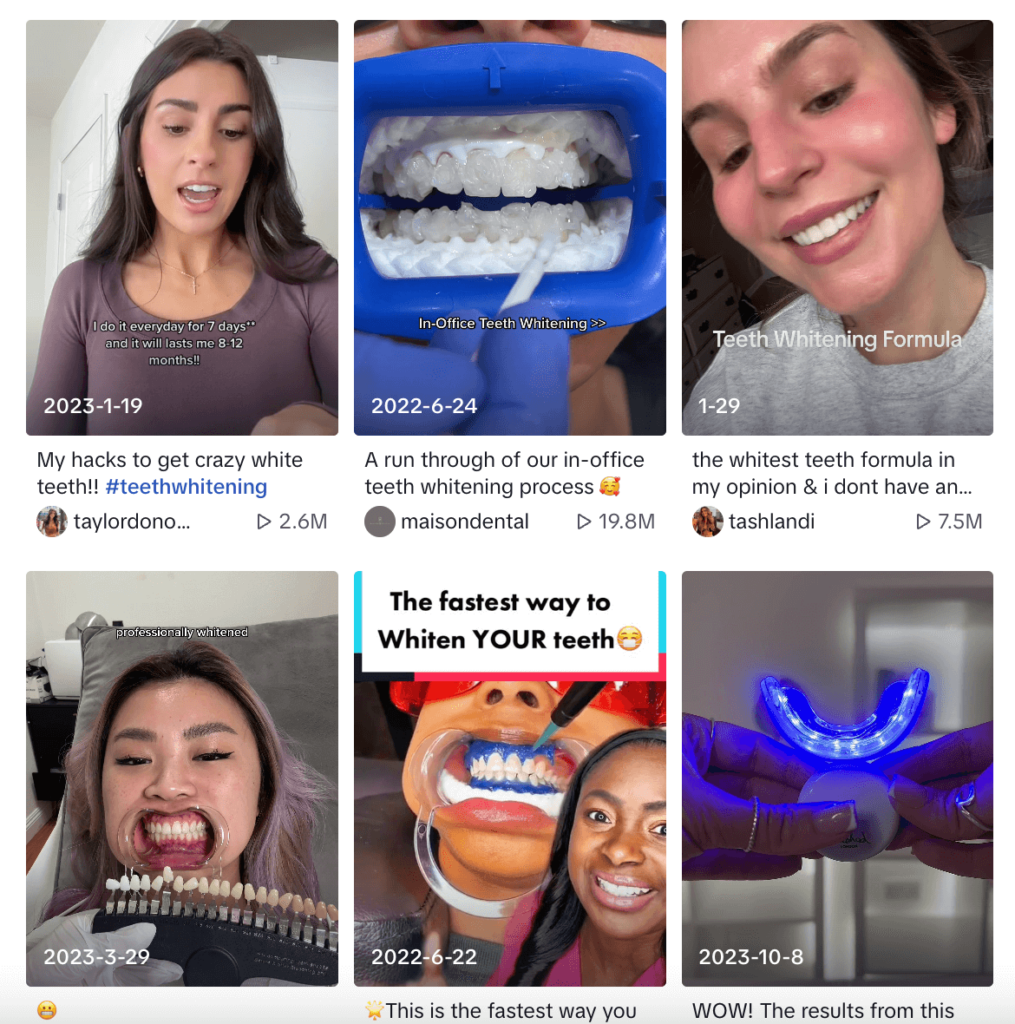
To achieve the same level of engagement on TikTok as seen with teeth whitening, check out our curated list of the most successful beauty marketing companies and wait no longer to be a leader in this industry. With their expertise, these companies will guide you through all your beauty marketing efforts, including branding, advertising, and more.
Share Short-Form Videos on TikTok
Lately, TikTok’s influence in the beauty industry marketing has become more apparent. The platform has experienced a boost in participation from both well-known and up-and-coming beauty brands, taking advantage of TikTok’s lively and engaging qualities to generate viral hits and achieve substantial interaction. For example, Huda Beauty has dominated TikTok, having more than 8.7 million followers and 187.2 million likes.
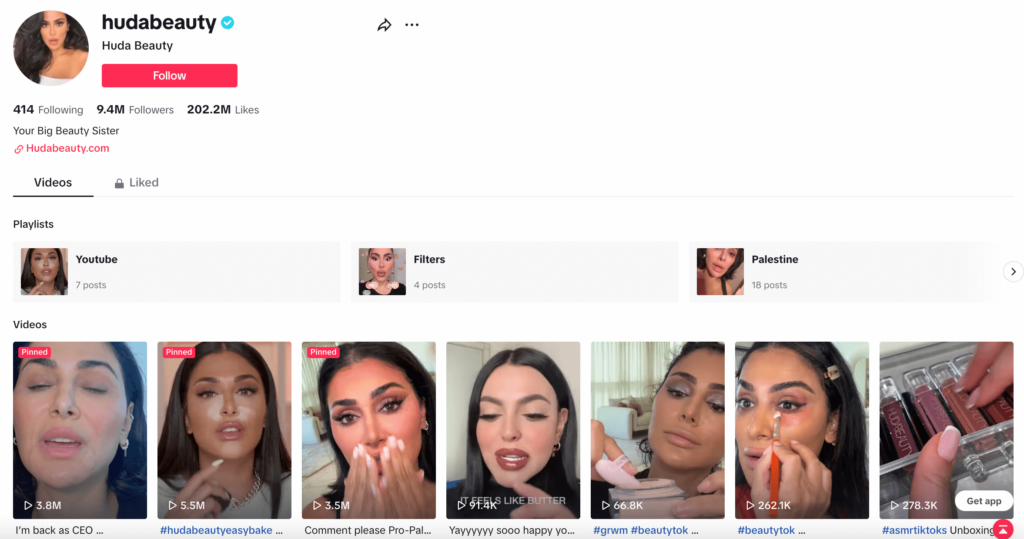
The brand has successfully used the platform to display its variety of products, taking full advantage of the app’s capability to spread beauty trends and product recommendations virally.
Another standout brand on TikTok is Rare Beauty, founded by actress and singer Selena Gomez. Rare Beauty has built a significant presence on the platform, with over 3.5 million followers and more than 50.3 million likes.
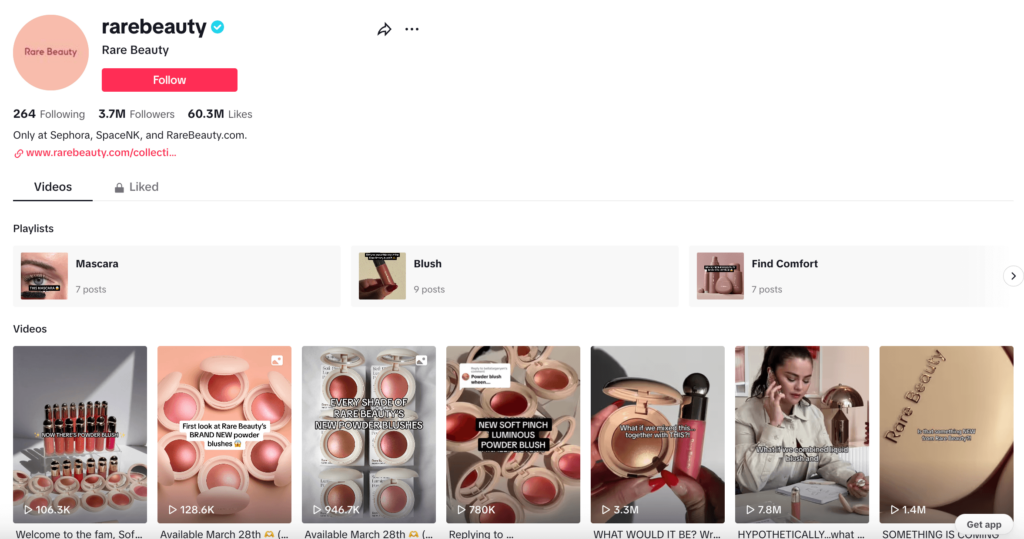
Its success on TikTok is credited to its powerful brand identity, which focuses on vegan and cruelty-free products. This approach aligns with the values of environmentally and ethically conscious consumers, particularly those from Gen Z and Millennials.
Prioritize Well-Being in Beauty Marketing Efforts
Today’s beauty consumers are looking for products that improve their appearance and contribute to their overall well-being. This focus on genuine benefits has shifted attention to products including stress-fighting skincare formulations and makeup that nourish the skin.
Brands that can show real results from their products are gaining a competitive advantage in the busy beauty market through their marketing strategies. And the merging of beauty and wellness is a sector fully ready for innovation, driven by consumers, especially younger ones, with a global market opportunity nearing $2 trillion.
Today’s consumers demand products tailored to their specific needs and values, such as sustainability, diversity, and inclusivity, leading to the rise of skincare and makeup products with probiotic and Ayurvedic ingredients, ingestible beauty supplements, and wellness devices like LED face masks.
Welcome Everyone & Embrace Inclusivity
The beauty industry is increasingly embracing inclusivity, moving beyond traditional standards to celebrate diversity across skin tones, hair types, genders, and ages. A standout example of this shift is Fenty Beauty by Rihanna launched a wide range of foundation shades for previously overlooked skin tones.
As a good example of a marketing strategy for beauty products, Fenty Beauty emphasizes “Beauty for All,” which not only garners immense commercial success but also sparks a broader movement towards inclusivity in the beauty sector. As highlighted on Think with Google, this approach demonstrates the powerful role of inclusivity in resonating with consumers and driving brand loyalty.
L’Oréal is also one of the beauty brands giving importance to inclusivity. Through initiatives like “March for Me,” the company allows its employees to participate in Pride Month events virtually, demonstrating their support for the LGBTIQA+ community.
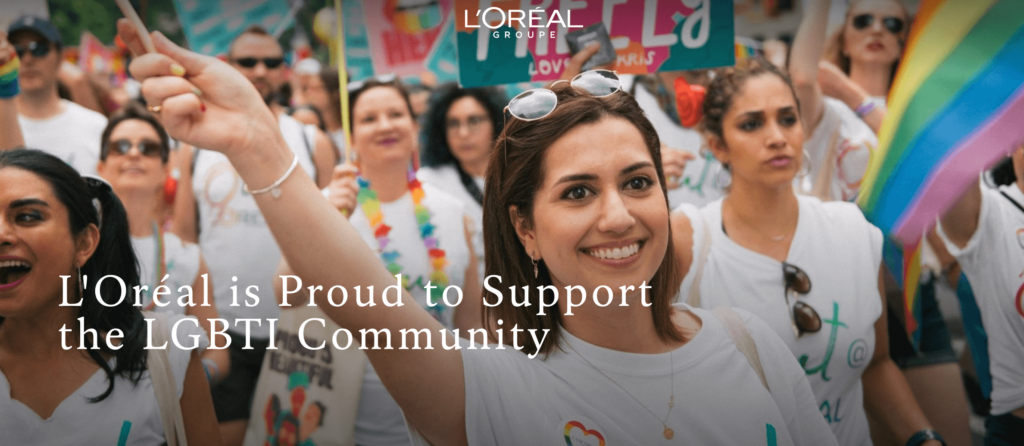
Adding to this narrative of embracing diversity, Benefit Cosmetics made a groundbreaking move by teaming up with Kate Grant, an influencer with Down Syndrome, as one of their brand ambassadors.
Grant’s engaging presence and her promotion of Benefit’s products on various social media platforms serve as an inspiration to many. Her involvement emphasizes the significance of acknowledging and honoring the uniqueness of individuals from diverse backgrounds, reinforcing the message that beauty comes in all shapes, sizes, and colors.
Focus on Holistic View of Beauty – Inner Beauty Movement
As you may have encountered, the positive forces & movements that promote self-love, acceptance, and celebrating diversity are on the rise (fortunately.) And the beauty industry is no exception.
The term “Inner Beauty Movement” refers to a cultural shift that emphasizes the importance of inner qualities like kindness, confidence, and resilience in defining beauty. It encourages people to focus on self-acceptance.
As a concept of beauty marketing approach, the movement goes beyond just makeup or skincare. It incorporates themes of mental health, self-care, and personal growth. So, it sends a powerful message that can connect with a wide “audience” seeking more than physical perfection. That’s why focusing on this kind of movement in marketing efforts is a good idea.
Conclusion
As we navigate these exciting beauty marketing trends, one thing is clear: the future of beauty marketing is vibrant, inclusive, and driven by values that resonate on a personal level. Whether you’re exploring the latest in AI-driven beauty or choosing products that align with your ethical beliefs, there’s never been a more thrilling time to engage with the beauty industry.


